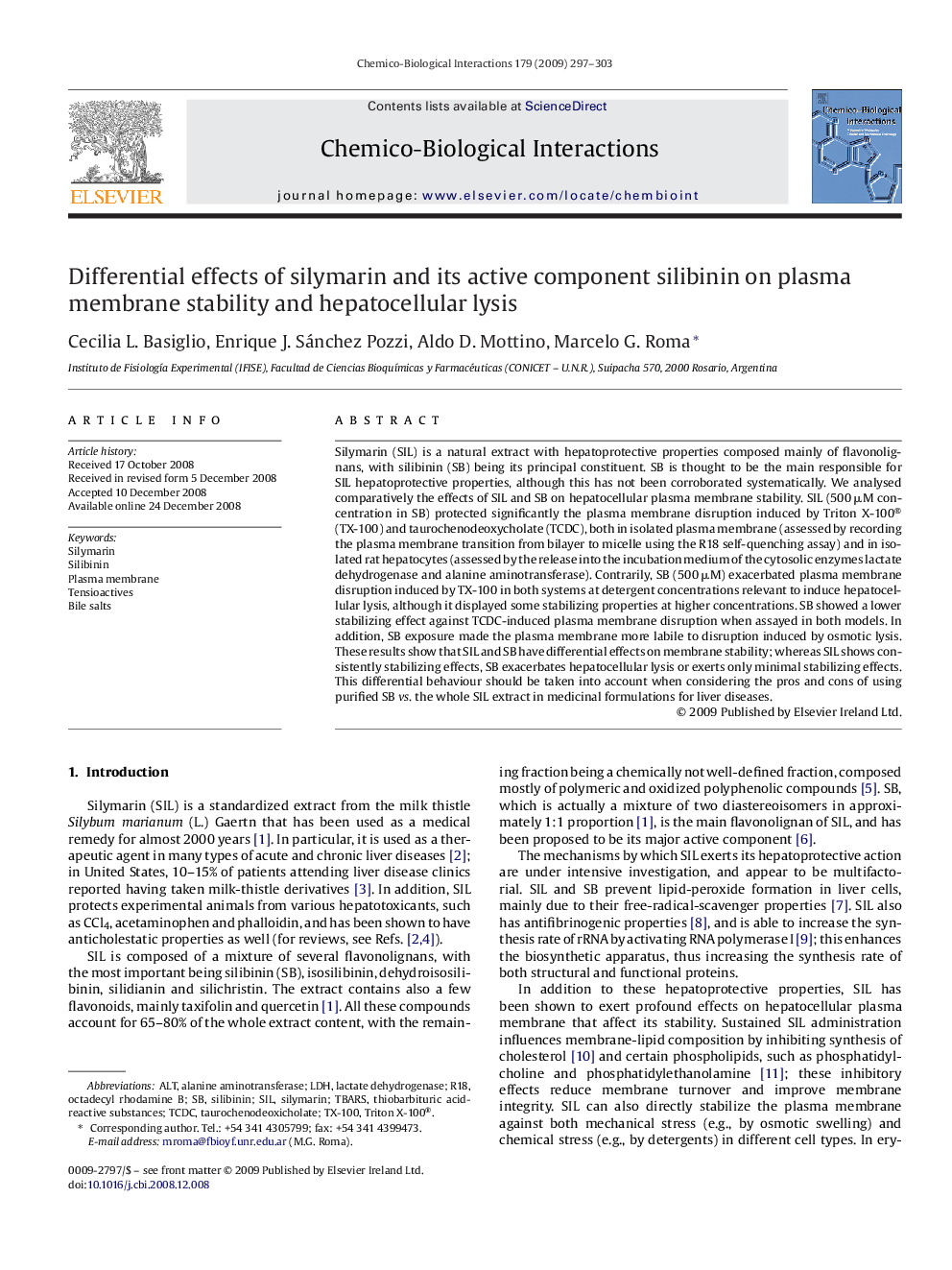| Article ID | Journal | Published Year | Pages | File Type |
|---|---|---|---|---|
| 2582238 | Chemico-Biological Interactions | 2009 | 7 Pages |
Silymarin (SIL) is a natural extract with hepatoprotective properties composed mainly of flavonolignans, with silibinin (SB) being its principal constituent. SB is thought to be the main responsible for SIL hepatoprotective properties, although this has not been corroborated systematically. We analysed comparatively the effects of SIL and SB on hepatocellular plasma membrane stability. SIL (500 μM concentration in SB) protected significantly the plasma membrane disruption induced by Triton X-100® (TX-100) and taurochenodeoxycholate (TCDC), both in isolated plasma membrane (assessed by recording the plasma membrane transition from bilayer to micelle using the R18 self-quenching assay) and in isolated rat hepatocytes (assessed by the release into the incubation medium of the cytosolic enzymes lactate dehydrogenase and alanine aminotransferase). Contrarily, SB (500 μM) exacerbated plasma membrane disruption induced by TX-100 in both systems at detergent concentrations relevant to induce hepatocellular lysis, although it displayed some stabilizing properties at higher concentrations. SB showed a lower stabilizing effect against TCDC-induced plasma membrane disruption when assayed in both models. In addition, SB exposure made the plasma membrane more labile to disruption induced by osmotic lysis. These results show that SIL and SB have differential effects on membrane stability; whereas SIL shows consistently stabilizing effects, SB exacerbates hepatocellular lysis or exerts only minimal stabilizing effects. This differential behaviour should be taken into account when considering the pros and cons of using purified SB vs. the whole SIL extract in medicinal formulations for liver diseases.
